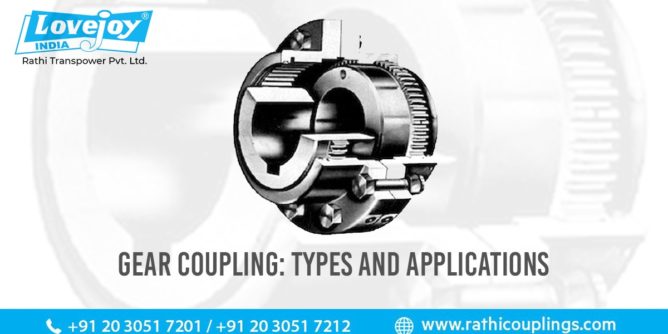
Couplings are mechanical components that ‘couples’ two drive components which empower a movement to be exchanged starting with one component then onto the next.
The drive components are regularly shafts. We will, in general, observe part of the utilization of the couplings primarily in the automobiles, for instance, the drive shaft which associates the engine and the rear axle in a transport or any car is associated by methods for a universal joint.
So as to transmit torque between two shafts that either will in general lie in a similar line or slightly misaligned, a coupling is utilized.
In view of the zone of utilization, there are different kinds of coupling accessible. But they are generally classified in the following varieties.
Gear Coupling:
Couplings are utilized as associating components between any two shafts. The kind of complexity in connectivity, the ability to be transmitted and the zone of application play a noteworthy job in the choice of the type of coupling.
Gear couplings essentially have a place with the class of flexible couplings which are fit for transmitting high torques.
Gear engineering plays a major role and utilizes the advantages of a gear coupling. In Practical application, the coupling is a finished gear assembly.
Despite the fact that one may not consider gears being flexible, gear couplings are particularly viewed as a flexible coupling.
A gear coupling is a mechanical device intended to transmit torque between two shafts that are not collinear.
The coupling commonly comprises two flexible joints, one fixed to each shaft. These joints are frequently associated by a third shaft called the spindle.
Each joint for the most part comprises of a 1:1 gear proportion internal/external gear pair.
The flanks and external ring of the gear are crowned to allow for angular displacement between the two gears. Mechanically, the gears are proportionate to rotating splines with modified profiles.
Read More: Benefits of using Flange Couplings
They are called gears as a result of the generally huge size of the teeth. Gear couplings are commonly constrained to precise misalignments of 4° to 5°.
Gear couplings customarily come in two varieties, flanged sleeve and continuous sleeve. Flanged gear couplings comprise of short sleeves encompassed by a perpendicular flange.
One sleeve is set on each pole so the two flanges line up face to face. A series of screws or bolts the flanges hold them together.
Continuous sleeve gear couplings feature shaft ends coupled together and abutted against one another, which are then wrapped by a sleeve. For the most part, these sleeves are made of metal, yet they can likewise be made of Nylon.
Single joint gear couplings are utilized to interface two nominally coaxial shafts. In this application, the gadget is known as a gear-type flexible, or flexible coupling.
The single joint takes into account minor misalignments, for example, establishment mistakes and changes in shaft arrangement because of working conditions.
These kinds of gear couplings are commonly restricted to precise misalignments of 1/4 to 1/2°.
Gear Couplings are utilized to join two shafts at their finishes. Definitely, these are mechanical devices that are utilized to transmit the torque in the middle of the two non-coaxial shafts.
Generally, gear couplings incorporate a flexible joint that is joined to each of the shafts and there is a third shaft known as axle which fixes the two joints.
There are various sorts of gear couplings utilized in various kinds of machines, as:
Full Gear Couplings:
The standard series 100 full gear coupling, the sort utilized on most industrial applications, is the double engagement forged steel coupling.
It will make up for both parallel (offset) shaft misalignment and angular misalignment and has a huge end float capacity.
Read More: Applications of Spacer Couplings
Half Gear Half Rigid Couplings:
The standard Series 100 Half Gear Coupling comprises of a flexible and rigid half. The flexible half is a standard Series 100 half coupling comprising of an external sleeve and an inner hub and the rigid half consists of a flanged hub.
Rigid Couplings:
A kind of coupling used to associate shafts that are in alignment. A rigid coupling is the least complex sort of coupling.
Rigid couplings are utilized when exact shaft arrangement is required; shaft misalignment will influence the coupling’s presentation just as its life.
Rathi Coupling is leading gear couplings manufacturers in India and fluid couplings manufacturers in India.
The performance of the machines is tested in extreme and critical conditions to ensure defect free machines.
We are committed to quality work and confident to meet the ever-growing challenging demands of customers.
